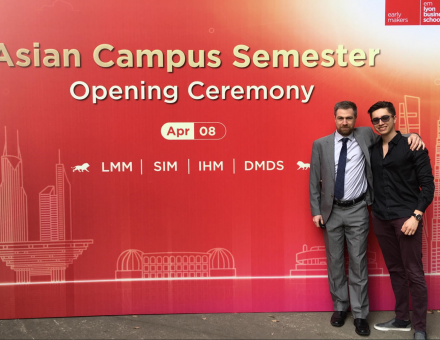After Florian and Yousra in our last article, we sat down with Fanny and Fabian who took the time to share their experience in Shanghai with us. In this second article our embassadors take us through the challenges of their semester in Asia, they descibe their favorite class and share what they have learned.

Fabian Cabrera
“Our last semester has been a very challenging but rich experience that moves you out from your comfort zone since day one. This has been a great opportunity for personal growth, to understand the eastern world and to be exposed to the fastest growing economy in the world.
Being exposed to the Asian environment has given us a broader perspective of what digital really means. China has been one of those few countries to really adopt a mobile-first environment. Everything happens through your mobile, this includes transactions, ecommerce, social media, and much more. Understanding China provides a competitive advantage over those who do not have the opportunity to actually be present here. Our class Asian Business Environment has been crucial to understanding the pillars of a true digital nation.
My favorite class so far has been IBM Watson mainly because of the final assignment we had to deliver. In my specific case, this assignment consisted in reporting the most relevant KPIs of a customer dataset directly to a Chief Marketing Officer. We were given freedom to not necessarily rely on the Watson software and that is why I was able to utilize Python for customer segmentation, predicting customer churn, and reporting return on marketing investment.”
Fanny Lee
“We also attended a class entitled “Introduction to e-commerce in Asia” to help us understand the digital environment in Shanghai and the importance of online shopping platforms like Taobao, Tmall and JD. These systems are totally different from Amazon, and Ebay in western world. The development of digitalization and e-commerce in China is rapid and China also has one of the biggest market in the world because of the huge population and economic growth.”


